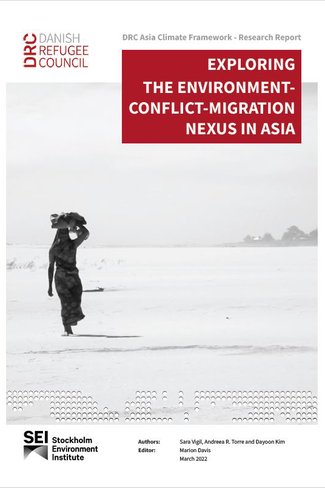Exploring the Environment-Conflict-Migration Nexus in Asia
2023
- Author
- Stockholm Environment Institute (SEI)
- World region
- East Asia and Pacific
- Origin of migration
- Myanmar
- Area of transit
- Thailand
- Destination of migration
- Thailand, Malaysia
- Who is affected
- Rohingya populations
- Type of climatic event
-
Rapid-onset event, Slow-onset event
Rising temperatures, rising sea levels, cyclones and environmental degradation, such as pollution, compound the negative effects of climate change events.
- Type of migration/mobility
-
Cross-border
- Destination industry or sector
-
No data available
- Type of modern slavery
-
Human trafficking
- Link between climate change, migration and modern slavery
- Direct, Indirect
- Key vulnerability factors
-
Vulnerability to human trafficking is increased by precarious living conditions (e.g. in camps located in low-lying areas prone to flash flooding or temporary shelters located in areas at risk of landslides), marginalisation, restrictions on freedom of movement combined with isolation, labour shortages and a lack of safe migration options.
- Summary
-
The report focuses on the intersection of climate change, migration and conflict in Asia. The case study on Myanmar identifies the Rohingya people as being vulnerable to the impacts of climate change and human trafficking. The authors recognise the complexity of establishing a direct link between these issues, particularly when climate change acts as a threat multiplier and systemic socio-political and economic challenges also play a role. They highlight the importance of providing adequate support to immobile groups, who are also vulnerable to the effects of climate change.
- Recommendations
-
The document makes recommendations to two main groups of stakeholders: policy makers and the humanitarian community. It stresses the importance of taking an intersectional approach and the need to close the research gaps identified, particularly the need to improve our understanding of the links between the three overarching areas, beyond causal explanations.



